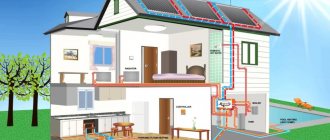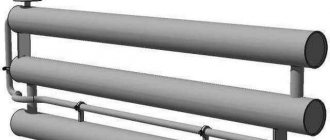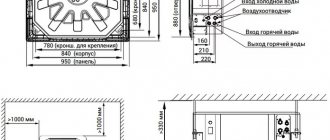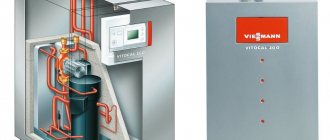Heat sources

Despite the development of new modern options, standard methods are very popular. People prefer to receive and comply with the technical conditions prescribed by the gas supply company, install gas boilers, and connect to main pipelines. If the settlement where the house is located is not supplied with gas, then many people make electric heating or build a firewood stove. A more modern option is solid fuel boilers.
Also, those who are looking for options on how to arrange heating without gas and firewood pay attention to liquid fuel units. Diesel fuel is required for their work. In addition to diesel fuel, they run on rapeseed oil or kerosene. They can be steam or hot water.
Another option is pyrolysis boilers. The principle of their operation is based on the fact that the coolant is heated by steel heat exchangers, in which heating elements are mounted. This is one of the options for electric heating.
There is no gas - we are considering all possible heating methods
Increased financial costs for heating a residential building during the cold period, excessive consumption of blue fuel, a situation that is common and familiar to many owners of private houses. Let's try together to find the best way out of this situation. The main condition, which is relevant in this case, is to obtain economical heating, which is not inferior in terms of its technological parameters to the usual gas water heating for us.
Having evaluated all the technical capabilities of various heating options, let us dwell on each of them in more detail.
Recommended! The Teplodar company offers solid fuel heating boilers that run on the main types of fuel: wood, coal. If necessary, the equipment can be easily converted to pellets and gas. You can buy boilers on the manufacturer's website https://www.teplodar.ru/.
The most proven and oldest method of heating a residential building is stove heating. In rural areas, in the private sector, you can still find houses where a traditional stove stands not just as an element of ethnic decor, but as an important component of home life. Combined ovens are mainly common, which play the role of a heat source and serve for cooking. The presence of a stove in the house will save gas, especially if there is an abundance of firewood and their quantity is not limited.
If there is such a stove in the house, the issue with an alternative option for heating the house has been resolved. Despite the existing disadvantages that are typical for stove heating. When the house is warm at a relatively low cost, few people pay attention to the soot and soot present in the room. The only aspect that remains in attention is the fire safety of stove heating.
Important! The oven needs constant cleaning. The optimal operating mode depends on the condition of the chimney. Good draft avoids the accumulation of hazardous combustion products, and the access of fresh air guarantees an acceptable level of CO2 in the room.
Another equally convenient option, if there is no gas, is to use liquid fuel heating systems. The main type of fuel in this case is diesel fuel. Less common are boiler models that run on rapeseed oil or kerosene. Heating a private house in this case will be effective, given the high efficiency of liquid fuel boilers. Heating of living quarters with diesel fuel is rarely used.The reason for this is the difficulty of storing large volumes of diesel fuel and the high fire hazard of such heating systems. And who will like the constant smell of diesel fuel in the house, the eternal dirt and soot.
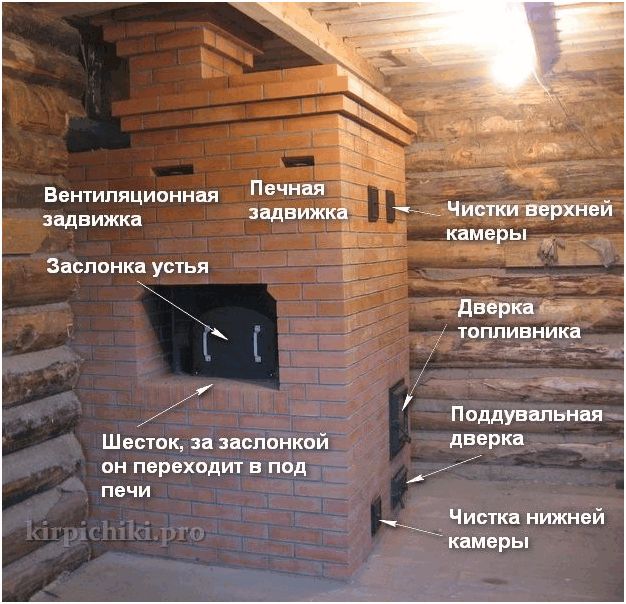

Modern technologies have stepped forward, providing consumers with a wide range of models of equipment that, by burning solid fuel, has a high heat transfer. Solid fuel pyrolysis boilers have a fairly high efficiency, about 80%, are equipped with automation, do not require the constant presence of a person and frequent loading of fuel. Solid fuels are still the cheapest heating method. You should evaluate the existing disadvantages of such heating options, especially when there is a question of quick and effective replacement of the missing gas.
Combined, multi-fuel boilers offered today by many firms and companies have a high cost. For objective reasons, such equipment has not yet found its niche in the consumer market, given the financial capabilities of the population.
Important! Before taking up the calculator and making calculations of the efficiency of heating a private house without gas, it is necessary to eliminate the confusion between volumes measured in cubic meters. meters and the mass of fuel, measured in kilograms. All types of fuel, except for electricity, are best measured in kilograms, since the calorific value of the fuel is related to weight.
An unbiased analysis of the efficiency of the use of various fuels is appropriate here. The table below will give you a visual idea of which type of fuel is most efficient today, the cheaper it is to heat the house.
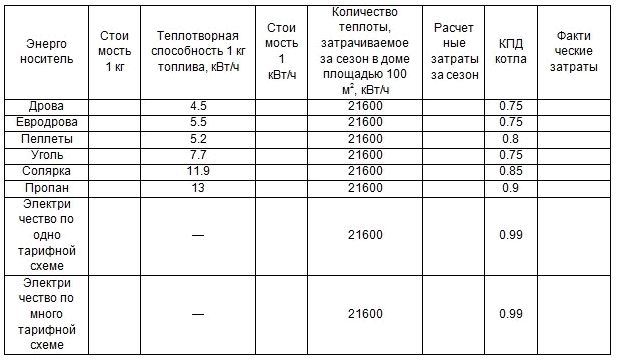

These tables allow you to make simple calculations yourself, substituting the actual cost of fuel.
The cost of heat energy obtained by using each type of fuel is calculated as follows:
We divide roughly the cost of fuel in your region by the specific heating value of the fuel. Divide the data from the second column by the parameters specified in the third column. In the fifth column, we enter the data from the calculation:
- heating a private house of 100m 2 during the heating season will require 5 kW / h;
- 24, the number of hours in a day;
- we take into account the duration of the heating period - 180 days (6 months).
As a result, we get: 5 x 24 x 180 = 21600 kWh.
As you can see from the table, the data for all types of fuel used in our homes are the same. This indicates approximately the same efficiency of the proposed heating options. The only amendment is possible when it comes to different sizes of the building. Household intensity of the use of heating devices and the thermal efficiency of a private house play a significant role. The value of 5 kW / h taken into account is characteristic of a building well insulated with modern materials. The duration of the heating period can also vary depending on the climate of the region.
We multiply the cost of 1 kW / h of thermal energy in each individual case by the total number of kilowatt hours, we get the cost of each type of fuel. We divide the obtained figures by the theoretical value of the efficiency of equipment for burning each type of fuel, we get the actual parameters of efficiency and the answer - the more profitable it is to heat buildings without gas.
Alternative models
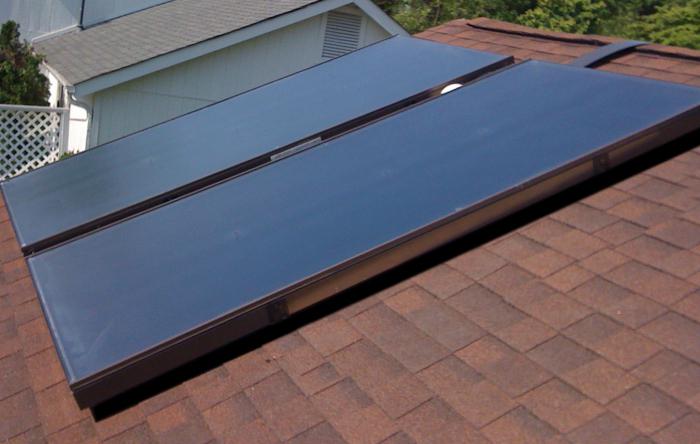

If you want to equip heating, but at the same time do not use standard universal gas-wood heating boilers, then you will be interested in newfangled alternative systems. So, one of the possible options is a heat pump. This is one of the engineering innovations that at this time causes quite heated discussions.
Solar collectors are another alternative source of thermal energy. They can be flat or vacuum.
Basic heating methods
A warm house without heating - a few decades ago it was a fantasy. Today, such houses really exist, they are being built using energy-saving technologies and a careful approach to identifying places of thermal energy leaks. The task of developers and builders is to keep the heat inside the house as much as possible and not let it escape outside. Solar collectors are used as primary sources of thermal energy.
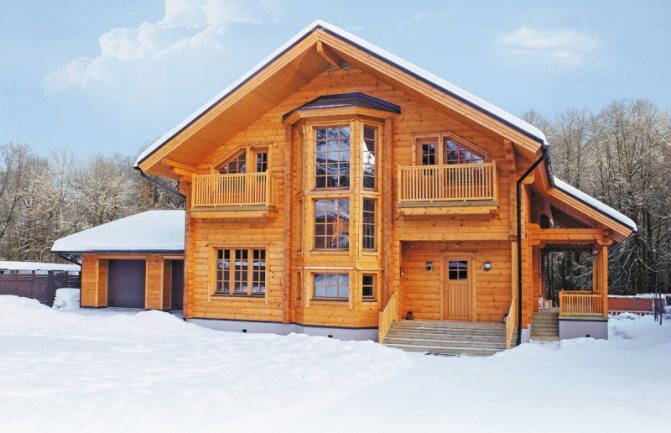

In most of the territory of Russia, it is difficult to build a house without heating also because we have a rather cold country. You can risk such an experiment somewhere in the southern regions. You don't even need to stutter about the central strip and Siberia.
It is really possible to build a house without heating. To do this, you will have to:
- Move to a suitable climatic zone;
- Invest in expert advice;
- Invest in the purchase of energy efficient building materials.
The costs will turn out to be high, for many of our compatriots they will become unaffordable. After all, we think about heating without gas and electricity only for two reasons - there is no money to pay for utilities or there is really no main gas pipeline in the village.
Classic options
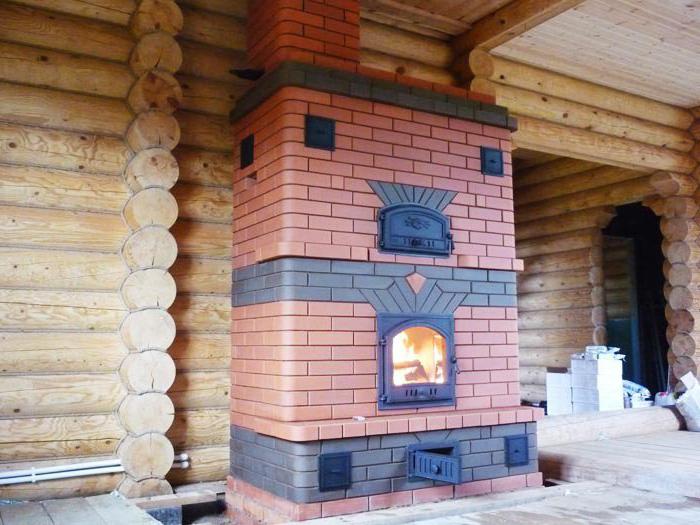

In regions where there is no gas and there are regular interruptions in the supply of electricity (in other words, they constantly turn off the lights), many people heat their homes using a conventional stove. This is the most budgetary option: the construction of the structure does not take much time and does not require huge investments. It is built from bricks, clay, sand. For the grill, doors, latches, metal is also needed.
But heating a house with a stove is a rather laborious task. You need to regularly add fuel, rake out ash, monitor the heat. It is also important to organize a dry storage area for fuel. The room in which the stove is installed will be constantly contaminated with soot during the heating season. But its main drawback is that it is not able to evenly warm up the entire building.
Heating options without the use of electricity and gas
To list all the ways how you can heat a country house or summer cottage, we will assume that electricity is still supplied there. An enterprise-supplier has set a small limit on power consumption (3-5 kW), which does not allow electricity to be made a source of heat, but makes it possible to connect heating equipment. In a detailed study of each option, we will highlight those that do not require the use of the mains.
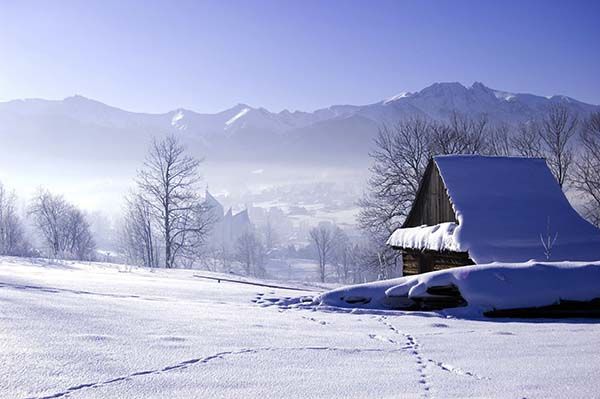

Houses located on the outskirts are often not supplied with gas
So, if there is no gas and electricity (sufficient power), then heating for the house can be organized in the following ways:
- Put a stove or a solid fuel boiler connected to a water heating system. Use firewood, coal, fuel briquettes or pellets as an energy source.
- Arrange autonomous heating with liquefied propane from a ramp with cylinders or a gas tank. The heat source will be an ordinary gas boiler or convectors that heat the premises with warm air.
- Use diesel fuel and waste oil to generate heat by installing appropriate equipment.
- Draw energy from renewable natural sources, using solar collectors and a heat pump for alternative heating of a country house.
Note. Unfortunately, almost all of these methods become useless when it is necessary to decide the question of how to heat the apartment. We'll have to do without liquefied gas and firewood, and liquid fuel is out of the question. There is only one way out - economical heating with electricity using infrared heaters or an air-to-air heat pump (in the southern regions it will be replaced by an inverter air conditioner).
Let's single out the heat sources that do not require connection to the house power grid for operation:
- wood-burning stoves, metal and brick, fireplaces;
- solid fuel boilers equipped with a mechanical draft regulator and working in conjunction with a gravitational (gravity) heating system;
- non-volatile floor standing boilers capable of operating on liquefied gas and connected to a water gravity system with radiators.
To implement the rest of the methods, electricity is needed, albeit in small quantities. If you do not take into account various home-made devices, then for burning diesel fuel you need a burner with a pump and a fan powered by the mains. The same is the case with all heat pumps and TT-boilers with forced air supply, including pellet ones. Now let's take a closer look at ways of how to heat a country house or cottage if there is no gas and electricity supply is limited.
Combustion of solid fuels
One of the most common methods to organize heating a house without gas is to use coal, firewood and briquettes pressed from various biomass waste (sawdust, straw, sunflower husks, pine needles, and so on). To burn them and get the required amount of heat, various furnaces and boilers are used. The former are designed for direct heating of indoor air, the latter work with water systems - radiators or warm floors.


The easiest option is to put in a nice metal stove.
Amendment. In a room where a wood or coal stove is located, heat is distributed not only by convection from heating the air, but also with the help of infrared radiation emitted by its heated walls.
Heating stoves are of three types: steel, cast iron and brick. The positive nuances of their operation are as follows:
- Arranging home heating with a steel or cast iron stove is the cheapest and easiest way. For its installation and launch, it is not necessary to invite masters, everything can be done by hand.
- A stationary brick oven is capable of heating several rooms, accumulating a large amount of heat in the thickness of the walls.
- Any of these heat sources can be adapted for cooking, drying clothes and shoes.
- The device of many stoves provides for a water circuit built into the firebox in the form of a tank or a coil connected to several radiators located in adjacent rooms. There is a moment: for the movement of the coolant, it is necessary to lay pipes of an increased diameter in compliance with the slope (gravity system) or install a circulation pump.
- Firewood and coal are the cheapest fuels of all energy sources, so heating costs are acceptable for most homeowners.
- The ovens do not need electricity at all.
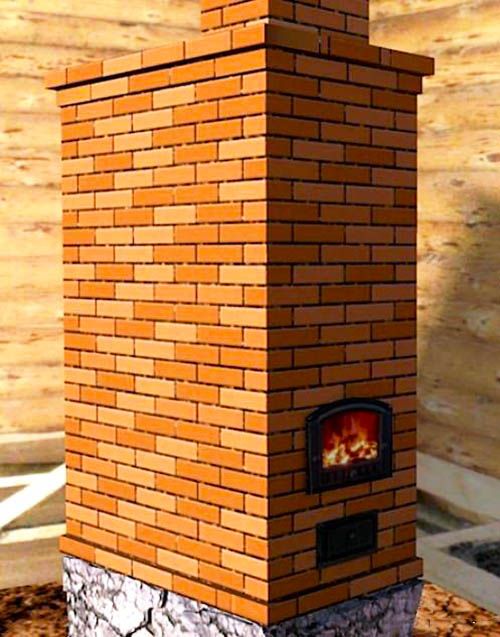

A brick stove gives a pleasant, healthy warmth, but it is not easy to build.
Note. A heat source such as a wood-burning fireplace cannot be ruled out. True, it is enough to heat only one room in which it is located.
Not without negative points:
- stove heating of a private house without gas means chopping and carrying firewood, loading them and daily cleaning from ash;
- a chimney with good natural draft is required for the heater to work;
- metal stoves are incapable of heating large country cottages, their capacity is enough only for a country house or 1-2 rooms;
- the construction of a brick oven is not a cheap pleasure, and a place for it must be provided even at the design and construction stage of the building.


It should be borne in mind that a brick oven is being built on a foundation.
Heating a stone or wooden house by means of a water system with a solid fuel boiler is more economical, since the efficiency of these units is higher (75% versus a maximum of 60% for stoves).Due to this, the duration of combustion from one fuel tab is increased, plus the issue of complete heating of the building by heating devices spaced around the rooms is resolved. Hence, it becomes possible to heat large areas of the house in the absence of gas and to regulate the intensity of heating the premises.
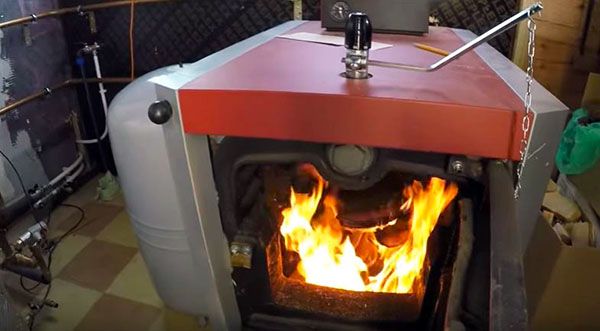

TT-boiler with mechanical draft regulator in operation
Otherwise, TT boilers inherit the features of the furnaces. They also need a chimney, periodic cleaning and loading new portions of firewood and coal. If we compare the cost, then the installation of a solid fuel boiler together with the system occupies a middle position between the purchase of a metal stove and the construction of a brick one.
An important point. A water heating unit that runs on wood or briquettes can be installed in any habitable house. If there is not enough space, an extension is made to the building, where heating equipment is installed.
Separately, it is worth mentioning automatic pellet boilers, which greatly simplify the life of the homeowner, since they need to be cleaned and added fuel once a week. Another thing is the price of equipment and fuel, and also the increased consumption of electricity. In addition to automation, the following electrical installations are involved in such heat generators:
- feed auger motor;
- fan motor - blower or smoke exhauster;
- heating element used for automatic ignition of pellets.


An automatic pellet or coal boiler is a great choice, but it also needs electricity
The listed elements are installed in a pellet burner and in total consume about 500 W from the mains, which is essential for a private house without gas and with a limited limit on the use of electricity. On the other hand, pellet boilers are more efficient and more economical than conventional ones (efficiency - 80% versus 75%), and their operation is more comfortable and safe (automation will prevent the unit from boiling). The question lies in the financial capabilities of the homeowner and the amount of the allocated limit of electrical power.
Heating with liquefied gas
Let's make a reservation right away that in the absence of main gas and electricity, it is not profitable to use this fuel in all countries of the former USSR. If the Russian prices of liquefied propane still allow them to heat houses, then in Ukraine this method is practically not used anywhere, because the fuel is too expensive. You can see the exact layout of the cost of heating by different energy carriers in this article.
To work on propane, any gas heat generator is suitable, only the wall-mounted one will have to be connected to the mains
To burn a propane-butane mixture, you will need an ordinary gas boiler, preferably a non-volatile floor-standing boiler, so as not to connect electricity to it. Accordingly, the heating system is a water gravity one with an open-type expansion tank. Gas is supplied to the boiler in two ways - from a ramp with cylinders or a large underground tank - a gas holder.
When installing and operating the equipment, you will encounter the following points:
- Installing a gas train with cylinders (at least 4 pieces are required) will be inexpensive, but the cash costs will have to be reimbursed with labor costs. With permanent residence, you will suffer much more with the transportation and refueling of cylinders than if you heat the house with firewood.
- Installation of a gas tank is a costly undertaking. But as a result, you will get autonomous heating without connecting to the gas main.
- Liquefied propane is no less efficient and comfortable energy carrier than natural gas, and provides the same advantages in the process of equipment operation.
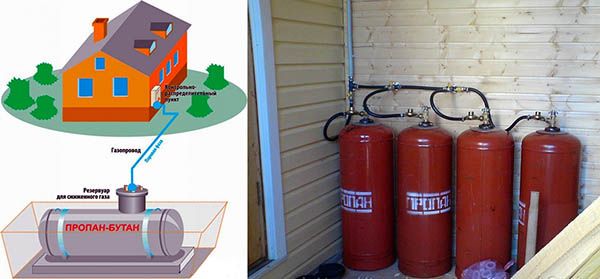

Methods for supplying liquefied fuel to the heat generator
Advice. It is better to organize heating with cylinders in a small country house, where you visit and live for 2-3 days. Our experienced expert Vladimir Sukhorukov will tell you more about all the nuances of using liquefied gas in his video:
Solid fuel boilers
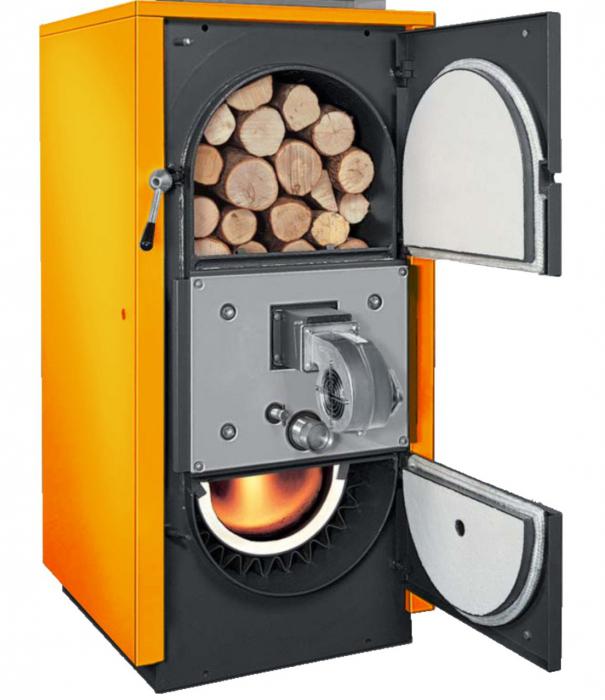

Now people have a great alternative, they do not need to build a stove if they want to give up heating with gas or electricity. Modern solid fuel boilers allow you to heat the house with firewood, coal or pallets. They are designed in such a way that the coolant in them heats up to a predetermined temperature, and then enters the radiators designed to heat the house.
There are also versatile options. For example, a gas-firewood heating boiler can fully operate on both solid fuel and gas. Such options are initially equipped with two combustion chambers. Depending on the model chosen, a gas burner can be installed in them, but in some cases it must be purchased independently.
You can also find gas-wood-electricity combined heating boilers on sale. In addition to furnaces designed for the use of solid fuel or gas, they are additionally equipped with heating elements. Depending on the situation, the owner of such a unit can choose the mode of operation himself and change the energy source at his own discretion. There are models that change the type of fuel automatically. For example, you can fill up the firewood at night, and when they burn out, the boiler itself will switch to gas heating.
But the cost of universal models is quite high. The average option will cost 200-300 thousand rubles. They, as a rule, are used all year round, because these double-circuit boilers not only heat the premises, but also heat the water.
What is the heating of a house without gas and electricity - choosing the best option
The dwelling may have a minimum of furniture and electrical appliances, but a source of heat must be required. Since ancient times, the home has been associated with good health, positive mood, and a cozy psychological atmosphere. Heat in an apartment or a country house can be provided in modern ways, using gas or electricity. But the issue of heat production using alternative fuels remains relevant in many cases.


Features of the use of solid fuel units
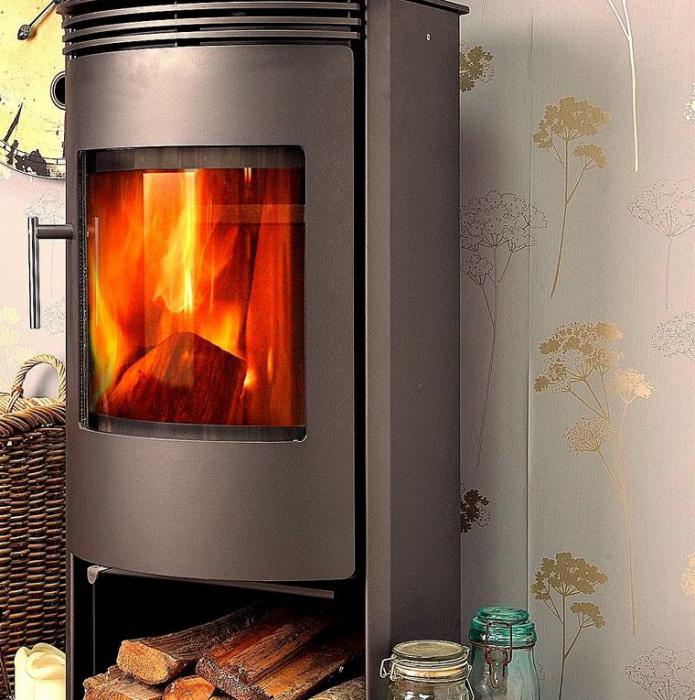

If you decide to make combined heating "gas-wood", then you need to know some of the installation features of the equipment. Of course, its installation must be entrusted to specialists, but you must think over and prepare a place for it in advance. So, despite the relatively small dimensions, each of them will take about 1.5 m2. It is important to take into account that these boilers are heavy. Before installing them in the room intended for them, it is advisable to pour a "pillow" of concrete. Also, a chimney must be made in the boiler room, into which combustion products will be removed. A special air intake duct is also required.
The necessary additional equipment also takes up space. So, simultaneously with the boiler, a circulation pump, an expansion tank is installed. Most models of solid fuel boilers are equipped with several outlets. You can connect to them not only heating radiators and hot water, but also a "warm floor" system, heating of swimming pools, winter gardens and other objects.
Oil-fired boilers
Modern engineering solutions allow you to make heating in the house without gas and firewood. The simplest solution would be to install a liquid fuel unit. Diesel fuel, kerosene or rapeseed oil will be needed to operate and heat the coolant. There are two types of such units: hot water and steam. The latter are considered more preferable: they are easy to install and are compact in size.
The advantages of these boilers, which make it possible to organize heating in a residential building without gas and firewood, include high efficiency. Even large areas can be heated with their help. But they have significant drawbacks. The main one is fire hazard.In addition, oil boilers are quite expensive to operate. The price of diesel fuel is quite high, and a lot of it is needed for the full operation of the boiler. So, to produce 1 Gcal in a conventional liquid fuel boiler, more than 100 liters of fuel are needed.
Heating system options
The most common way to obtain heat energy is through fuel combustion.
In multi-storey buildings, heating is most often central, but there is a massive tendency to switch to an autonomous type of heating. It is several times cheaper and of higher quality. Compact heaters are now on sale that can be installed in small apartment kitchens. Practice shows their cost-effectiveness and ease of use.
In private houses and summer cottages, heating can be different:
- Steam from the central boiler room. Now this is rare, mainly in houses that were once departmental, and then became private property. Therefore, central heating is more related to multi-apartment high-rise buildings.
- Autonomous on natural gas or electricity. Basically, they try to carry natural gas into houses and dachas wherever there is access to it. It is not difficult to connect to gas pipelines if you take into account all the requirements of the gas supplying organization and purchase equipment that meets the rules for installing a gas heating system. Autonomous heating with electricity heating is quite an expensive pleasure and is justified only in young regions and in those places where it is impossible to connect to gas.
- Stove or fireplace for various types of fuel. If the stove is made by a competent stove-maker, then such a heating one solves the question of how to heat a house without electricity and gas. The stove creates a special microclimate in the house, purifies the air, and living heat has a beneficial effect on the body.
Water circuits are often connected to stoves or fireplaces when it is necessary to organize an effective heating system for a summer house without gas and electricity.
Heat pump


It is possible to organize heating without gas, firewood, and electricity using new fashionable alternatives. One of the environmentally friendly and safe options is a heat pump. It can extract heat from the bowels of the earth, extract it from air or water. Its advantages undoubtedly include its high efficiency. From each kW of energy spent in the pump drive, 5-6 kW is obtained. But this is one of the most expensive ways to organize heating without gas and firewood, pipes and boilers.
Reviews of people who decided to install this expensive equipment indicate that it is better to mount it in large 2-3-storey cottages. For small houses, it is better to buy a traditional boiler.
Why electricity isn't good
Energy-saving heating without pipes, boilers and batteries is built on the basis of a thin infrared PLEN film laid behind ceiling structures and wall panels. The infrared radiation they generate heats the rooms, creating a comfortable atmosphere in them. Such heating turns out to be economical, which is typical for infrared systems. But if you compare it with conventional natural gas heating, the costs will be high.
Assembling heating without pipes with your own hands, based on a film, is as easy as shelling pears - just mount it behind the walls and under the ceiling structures, and then ensure the connection to the mains.
Electric heating systems are easy to install, but expensive to operate. The same film pays off for several years, but the monthly costs of its operation result in thousands and even tens of thousands of rubles, which depends on the area of the household. Electric convectors also make it possible to do without boilers and pipes, but even being equipped with electronic thermostats, they are unable to reduce costs to an acceptable level. Therefore, we will tell you about more economical heating methods.
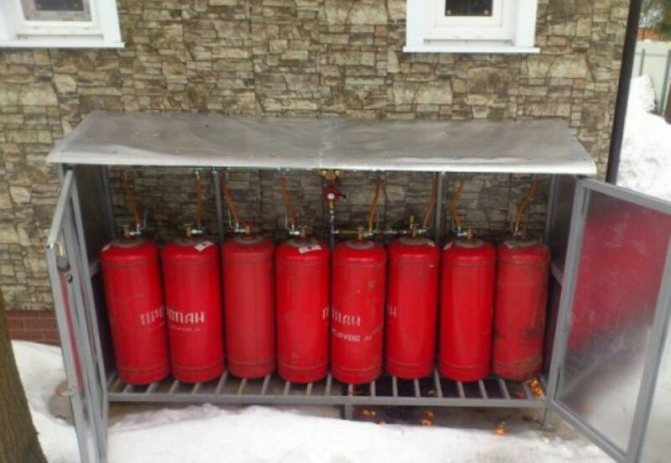

Use of boilers for liquefied gas
Almost any modern boiler can be easily reconfigured to work with liquefied gas. If there is no gas pipeline in a settlement, then, most likely, liquefied propane gas is sold there. And it can be used to create a heating system based on traditional pipes and radiators.
When creating autonomous heating with your own hands, do not forget to reconfigure the equipment. This requires replacing the jets installed in the boiler. Correct setting of heating equipment is also necessary. And it is best to entrust this procedure to specialists. Next, we install radiators in the rooms, lay pipes, perform connection work and enjoy the heating operation.
It should be noted that the work of heating on liquefied gas is more expensive than if it worked on main fuel. But it is still cheaper than electricity.
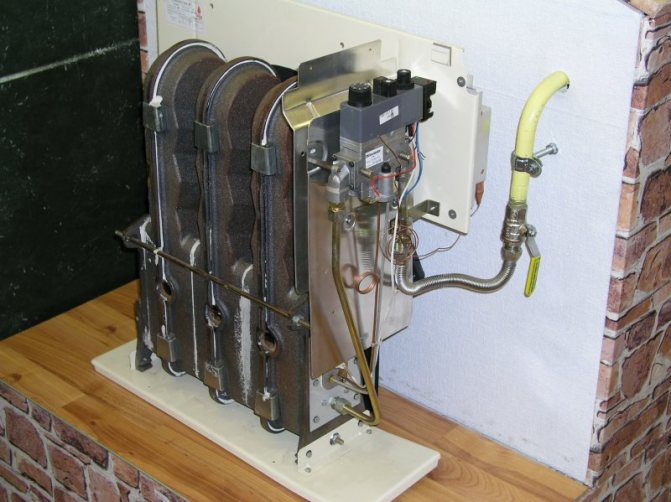

Gas convectors
The previous method is not entirely honest - some kind, but gas is still used there. But the next type of heating is also not distinguished by honesty - we again need liquefied gas and a little electricity. Gas convectors will help to create heating without pipes and boilers. These compact heaters are equipped with self-contained gas burners that heat up steel or cast iron internal heat exchangers. Then convection comes into play:
- Cold air is sucked in through the lower vents and heated by the heat exchanger;
- Heated air masses rise to the ceiling, displacing colder air from there;
- The procedure is repeated cyclically until fully warmed up.
Automation controls this entire process. True, it works on electricity, but it consumes it in limited quantities - after all, this is not electric heating.
These convectors are a relative novelty in the heating equipment market. But the price for them is not lifted to the point of lawlessness - a 2.2 kW model can be purchased for 15 thousand rubles. The chimney here is coaxial and is led out directly behind the wall.
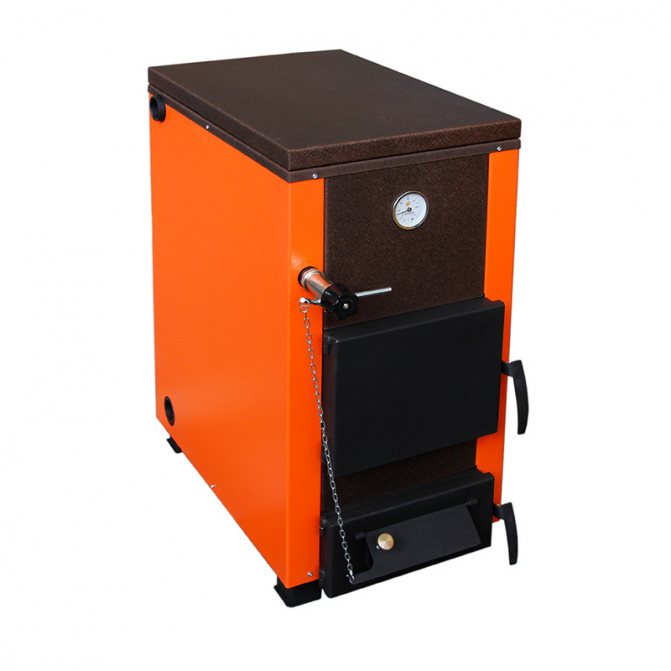

Solid fuel boilers
Full heating of a private house without gas and electricity is organized using solid fuel heating equipment. Some samples are really capable of working completely autonomously, without requiring gas cylinders and connection to the mains. It turns out that we produce heat without gas, simply and cheaply - using ordinary firewood. This firewood will be absolutely free if you collect it in a forest full of fallen trees (we do not recommend illegal felling).
Heating a house without gas and electricity begins with the choice of a suitable boiler. Here you need to pay attention to non-volatile models that can work autonomously. The market is full of them, the cost of adequate durable samples starts at 13-15 thousand rubles, but you can find it cheaper. Power is selected by quadrature - for example, a 10 kW model can heat up to 100 sq. m. living space.
The simplest wood-fired boiler can work without gas and electricity as part of an autonomous heating system. But in this case, you will have to constantly monitor the amount of firewood in the firebox - the logs burn out quickly. You also need temperature control in the pipeline so as not to overheat the coolant. That is, there is practically no automation here - the exception is models with mechanical draft regulators.
Mechanical draft regulation cannot provide regulation of the boiler heat output in a wide range.
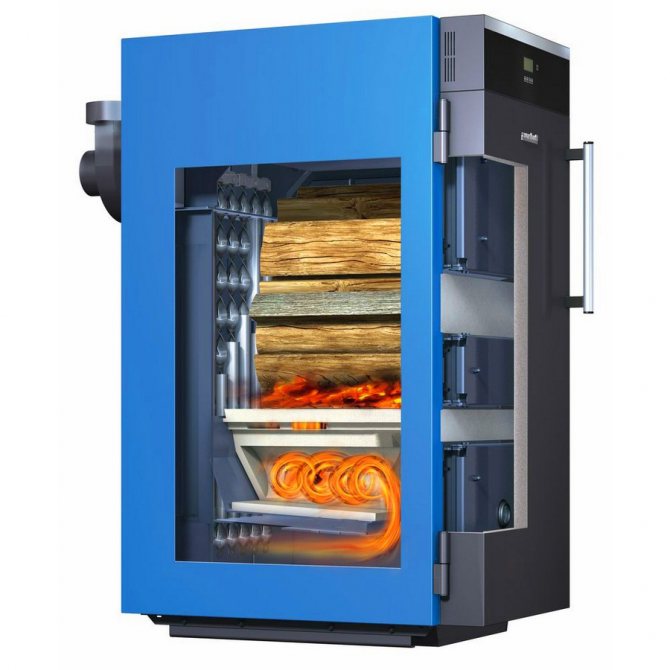

Automated equipment
A pyrolysis boiler will help to heat the room with the automation of solid fuel combustion control. Here, the combustion of logs is carried out with the release of gaseous pyrolysis products. These combustible gases are burned in the afterburner. This scheme increases the efficiency of the equipment and allows you to regulate the combustion process.Most often, automation is implemented due to a blower fan - turning on and off, it provides regulation of thermal power in a wide range.
Heating with a pyrolysis boiler will be more efficient and convenient. Here we do without gas, but we will need electricity - for the operation of the automation and the blower fan (costs will be minimal).
Another way to create more efficient and convenient heating is to put a pellet boiler with automatic fuel supply into the system. Equipped with a spacious pellet hopper, it can work for days, independently metering the fuel supply to the combustion chamber. Such equipment functions in automatic mode - it is enough to set the required temperature on the thermostat.


Liquid equipment
If you do not want to bother with firewood, and there is no bottled gas in the village, there is an opportunity to implement automatic heating on liquid fuel - diesel fuel or waste oil. For this, a liquid boiler is installed in the heating circuit. It is powered by a fuel tank installed in another room or outside. Features and advantages of liquid boilers:
- For their operation, electricity is needed - it feeds the nozzle and automation (costs are minimal);
- Fully automatic operation - you just need to monitor the presence of fuel in the tank;
- No gas required - the main thing is to find a source of inexpensive fuel;
- There is no need for unnecessarily frequent maintenance, which is typical for solid fuel technology - it is often necessary to remove ash from it.
But there are also disadvantages - it is problematic to heat an apartment without electricity and gas, using a liquid boiler. It's all about safety, hardly anyone will allow the operation of such equipment in an apartment of an apartment building. It is best to use liquid boilers in private households.
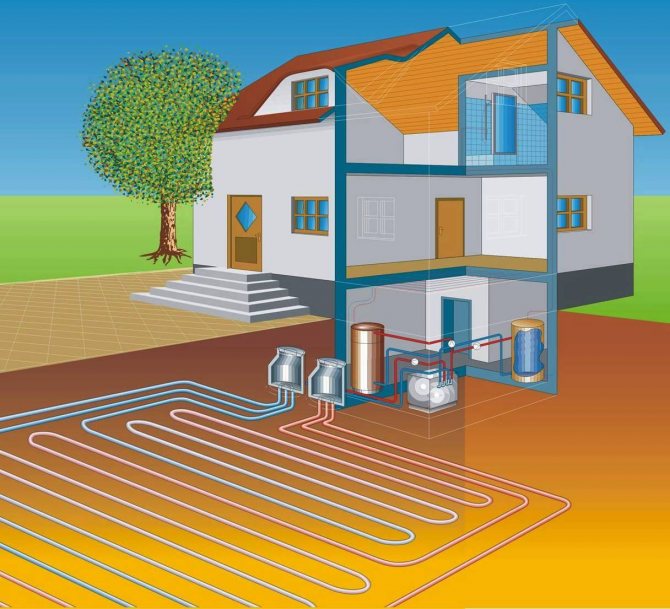

Using heat pumps
Heating without gas and firewood, pipes and boilers is possible. But only with the use of electricity. These are heat pumps that extract heat energy from air, earth and water. This energy is collected bit by bit by special pipelines in the soil or in the water column in rivers and lakes, after which it is sent to the heat pump. At the outlet of the pump, we get the coveted heat.
This heating will require electricity to work. But it is consumed in a limited amount - up to 80% of the heat is taken from the environment, which provides reasonable savings. Heat can be supplied to the premises by air or through pipes with radiators. The downside of heat pumps is their high cost - heating costs will be gigantic, unaffordable for a user with limited means.
The time for which the initial costs will be "repulsed" is also not encouraging - it can take up to 15 years before the heating starts to work in a plus.
Work organization
To install a heat pump, you need to make a circuit. If your house is on rocky soil, then one or more wells are made in it. Their total length is calculated based on the fact that there is about 50 watts of energy for every meter of the deepening in the ground. If you plan to install a 10 kW heat pump, then you will need wells with a total depth of about 200 m.
If there is a plot of about 600 m2 near your house, then you can make an earthen contour. In order to make heating without gas and firewood, it is necessary to install special pipelines at a depth of soil freezing. To obtain 10 kW, it is necessary that the circuit be about 500 m long.
The most preferred option is to use the nearest body of water. It must be flowing and large enough in size. It is necessary to install a water circuit in it, with a total length of 333 m. This length is sufficient for the production of 10 kW.
Air circuits are used least often.This is due to the fact that the minimum temperature at which such a pump can operate is -20 ° C.
Its principle of operation is the same as that of any refrigeration machine. It consumes electricity and converts it into heat energy. The pump removes heat from the cooled products, and the condenser transfers it to the room. That is, heat is taken from the bowels of the earth.
Solar panels
It is also possible to organize completely autonomous heating without gas and firewood, pipes and boilers. For these purposes, solar collectors are installed on houses. One of the main advantages is the environmental friendliness of these structures. But they also have significant drawbacks. First of all, it is important that their work directly depends on weather conditions. Also, do not forget that their purchase and installation are quite expensive. Also, special attention is paid to thermal insulation. Its organization significantly increases the cost of connecting such heating.
Alternative heating options
Without electricity and gas
With the temporary or permanent absence of the types of fuel to which we are accustomed, it is quite possible to arrange heating at home without electricity and gas. As you can see from the above, by replacing them with something else, you can even save money. The options here can be as follows:
- Of course, stoves and fireplaces - wood, coal, etc. Choosing this option will require the construction of an appropriate brick structure or the purchase of a ready-made unit. At the same time, you will get an environmentally friendly way of heating, and with some of these ovens - even cooking thanks to the presence of a stove (oven or frying compartment).
- An original way will be heating from your own source of electricity. There are two ways to get electricity autonomously:
- From sunlight. To do this, you need to purchase solar collectors that convert the sun's energy into heat (a kind of "heater without electricity") and electrical. Of course, you will have to spend money on the purchase of equipment, but then you can get heat and light, practically without wasting.
- From wind energy. You can buy a ready-made apparatus that converts it to receive electricity, or you can assemble it yourself. The scheme is quite simple: wind turbine (spinner), generator, battery.
Such methods of generating heat are very beneficial for country and country houses in areas where gas pipelines do not pass, especially for rarely visited households (summer cottages).
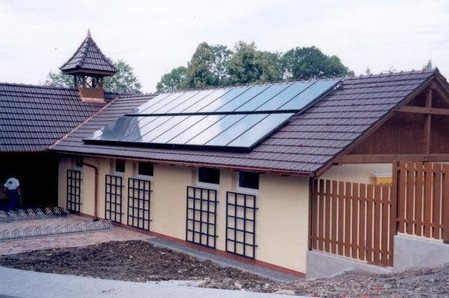

Solar collector installed on the roof of the house
Without pipes and boilers
The heating device can be equipped with a boiler with a connected system of pipe-radiator communications for heating several rooms at once (depending on the power of the device). But with no less success, you can have heating without boilers and pipes, consisting of only one heat source. Usually this:
- Metal or brick oven with the function of heating one or two adjacent rooms,
- Fireplace, as for medieval castles,
- Electric heater (oil, reflex, heat gun),
- At the worst, the heating function of devices such as air conditioners, etc.
INTERESTING! For houses built on the model of the old Russian "five-walled" houses, more than one heat source in the form of a stove, located right in the middle, between two adjacent rooms, is enough. Even at present, steam heating with pipes and radiators is not provided in such houses.
Consumer opinions


Having become interested in alternative energy sources, many consider them the most optimal option. But, as practice shows, they are not perfect. The cost of installing environmentally friendly heating options is quite high. Because of this, they have a long payback period.If we talk about such a heating source as a heat pump, then electricity is needed for its operation. Therefore, many recommend combining its installation with the purchase of a diesel generator.
For areas where there is no gas and interruptions in light, it is best to purchase solid fuel boilers. For smaller homes, there are relatively inexpensive options. According to ordinary people, they are the best substitute for stove heating.



